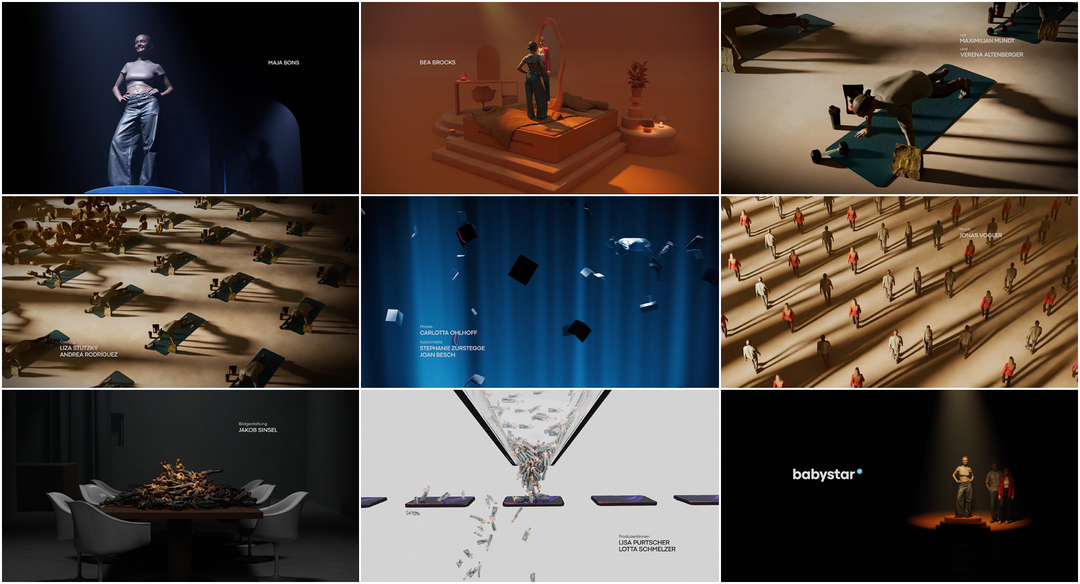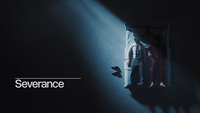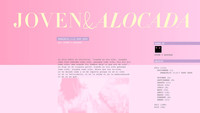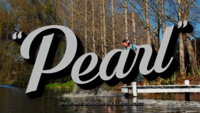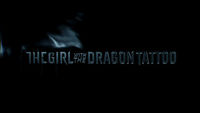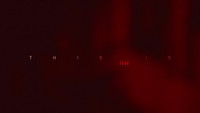Early in German filmmaker Joscha Bongard’s first feature, the titular babystar, Luca, crawls into bed with her mother and father after having a bad dream. “If I don’t see you…” says Chris to his 16-year old daughter, “good afternoon, good evening, and goodnight.”
The throwaway reference to Peter Weir’s indelible reality TV drama The Truman Show is apt, a cheeky in-joke about the family’s always-on influencer lifestyle. Their lives are branded, their home carefully curated, and their outings merely occasions for content. Bongard’s film is an affecting portrait of this moment, when social media has become a tantalizing career path for many families, when children’s lives are used as content for monetized social media channels.
Babystar’s central figure is Tiktok darling Luca, who is both star and victim, and played with endless charisma and depth by Maja Bons. There’s a pivotal scene in which she sits in silence, a faraway look in her eyes, listening to the impassioned CEO of an AI company (Verena Altenberger) wax poetic about a chat bot they will create by scanning Luca’s body and using the years of video footage her parents have created of her to duplicate her likeness. When Luca’s parents later suggest an addition to the family, it sparks a slow realization of the profound ugliness and exploitation of her situation – as well as her power within it.
Punctuating this moment is a title sequence. At 25 minutes into the film, it comes as a surprise, a stamp of style that segues between moods. In the sequence’s 3D animated scenes, Luca and her parents are plastic-shiny and hard, set on platters and in glass cases like products for the taking. There are moments of poignancy, like when Luca looks into a mirror and sees her mother, and of humour, as when Chris, focused on gua sha and push-ups, dives into a bathtub full of chicken nuggets. The title treatment, a lowercase “babystar” with that blue “verified” symbol so many of us now immediately recognize, is a tidy encapsulation and a clever brand for the film. In a world of social media, you can log out any time you like, but can you ever leave?
A discussion with Babystar director JOSCHA BONGARD and title designer ZOI NAUM.
Congratulations on your film premiere at TIFF! How was your festival experience?
Joscha Bongard: Insane. It was so intense but it was so beautiful. It felt very special to me and, like, in perspective of business, I think it was also very successful.
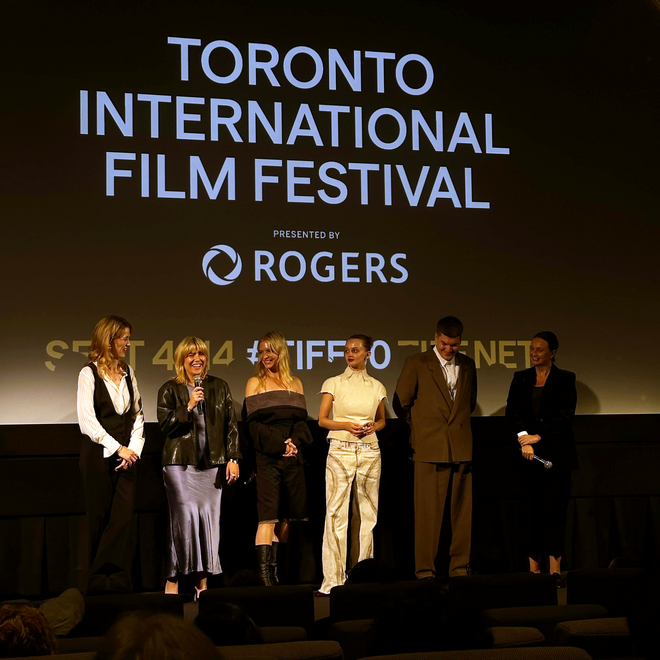
Joscha Bongard, second from right, with members of the cast and crew of Babystar (2025) at the 2025 Toronto International Film Festival.
Was this your first time at the festival?
JB: Yeah. And it was actually my first time at such a big festival. The audience is so open and they have great questions in the Q&A. I've been to Berlin, of course, but it feels different when it is in your hometown somehow. You live in Toronto, right?
Yes, and I’ve attended a few times, but it's always different.
JB: How did TIFFTY feel?
"TIFFTY" is a nickname for the 2025 edition of the Toronto International Film Festival, its 50th year running.
[laughs] It’s like a river—you can never step in the same river twice. It’s always moving. You’re always new. And speaking of new, let’s shift over to talking about your film! Babystar. I loved the surprise of the title sequence. Tell me about the decision to drop it about 25 minutes in.
JB: Yeah! So, I feel like the sidekick because this is like the one-woman Zoi show, but let me say that the title sequence was there in the first treatments, but it was earlier in the film. When we went into editing, we found that we needed it later. The film is very slow and silent and then we have the content montages where it takes up speed. I felt that the title sequence needs to be a dividing element. And I really love when title sequences hit very late, like in Climax. I really loved that.
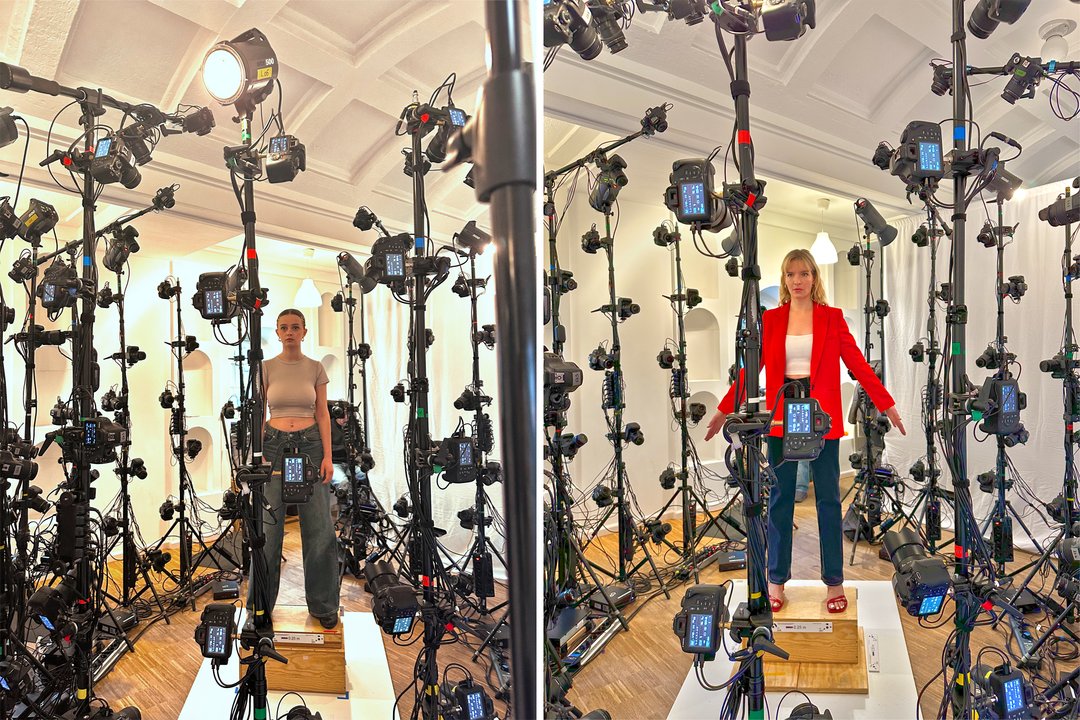
Maja Bons and Bea Brocks stand as they are 3D scanned
JB: Also we had this scanning of Luca, the digitalization of herself right before, and then the title sequence marks the moment after. Afterwards, she really starts to realize how used she was.
So it's sort of a dividing line after her innocence is lost.
JB: Yes, I like that very much. It was in the script initially, but [it wasn’t] that… let's say, advanced. We imagined [the figures] to be more puppet-like, and I imagined them being dragged by their.... [pauses] I have to look this word up…
Zoi Naum: Umbilical.
JB: Yeah! Like babies. Dragged through these very commercial rooms. So this was the beginning, and then Zoi came in.
How did you come to collaborate with Zoi? Had you worked together before?
JB: No, but we met at film school, at a screening, very briefly. Our DP Jakob brought us back together. They worked on Zoi's great short film, because he's also a colorist, so we met over Zoom. We have never met in person since then. This Zoom room, this was really our space together. We shared a lot, like late nights and evenings, because of the time difference. So, first collaboration for us but hopefully not the last.
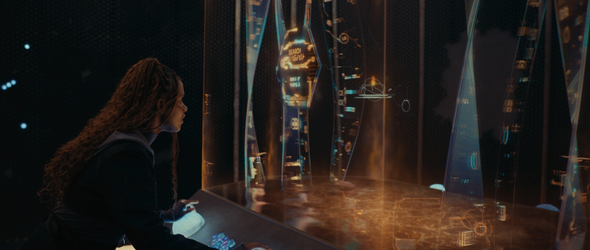
Still from Spark short film directed by Zoi Naum
Zoi, tell me about the short film that Joscha mentioned.
ZN: It's called Spark. It's a sci-fi short and it's currently touring in some festivals. But it's more of a showcase of futuristic user interfaces, so something quite different, because I just love the use of motion design in movie terms. Expanding storytelling with motion design. Those are, like, the two main things that I'm in love with and like to explore.
How did you arrive at the look and feel of the title sequence? There had been the vision for something with more of a fleshy, umbilical vibe, but where it ended up has a very commercial, plastic feel.
ZN: We started talking about ideas before the shoot and then waited to see how the movie would turn out in editing. We realized that it might not be the way to go, after all, and decided on a different strategy. What inspired us was how contemporary art is displayed in museums, because these characters are displayed more like a product – like high-end products instead of a person. So, clean and stylized rooms and photography was a very specific inspiration, as well as store window displays. The movie itself has a very clear visual language. We ended up being quite conscious in the title sequence of how we would use camera angles and lighting.
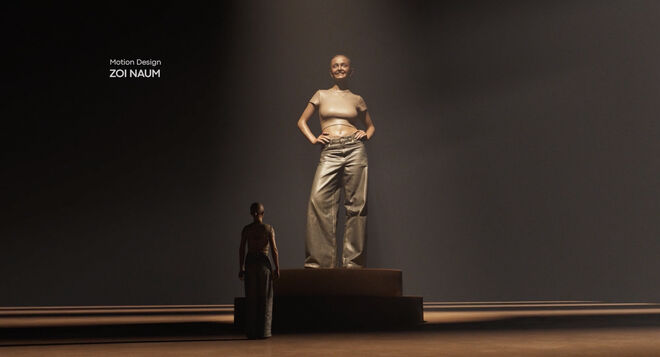
Luca (Maja Bons) looks at a giant version of herself on a pedestal
Right, there is a clear correlation between the film’s set design and how you've styled the spaces in the title sequence.
ZN: Yeah, exactly. It's like all of these combined sets – a bit of a theater, a production stage.
Early on in the title sequence is Luca looking into a mirror and then there's a quick view of her mother in the reflection.
ZN: Luca as a character has always been displayed on camera, so everything she does is about trying to display herself in a way that she would like people to perceive her. Her mother, of course, is a big role model for her. I mean, every little girl's mother is at some point.
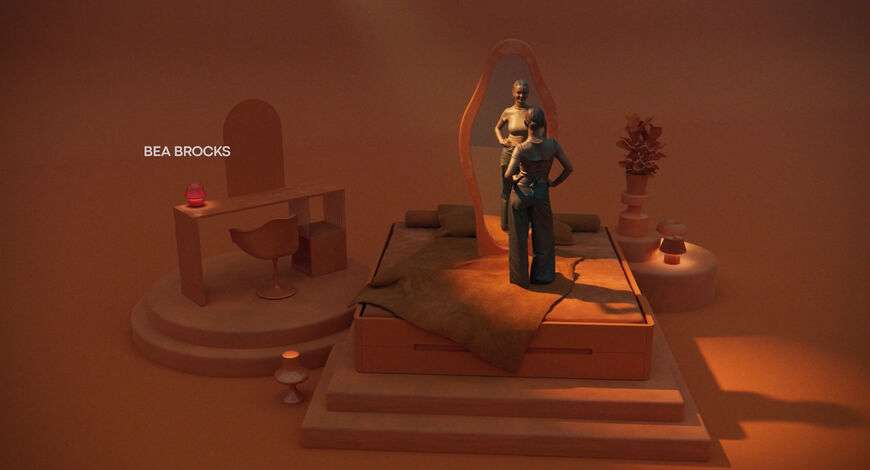
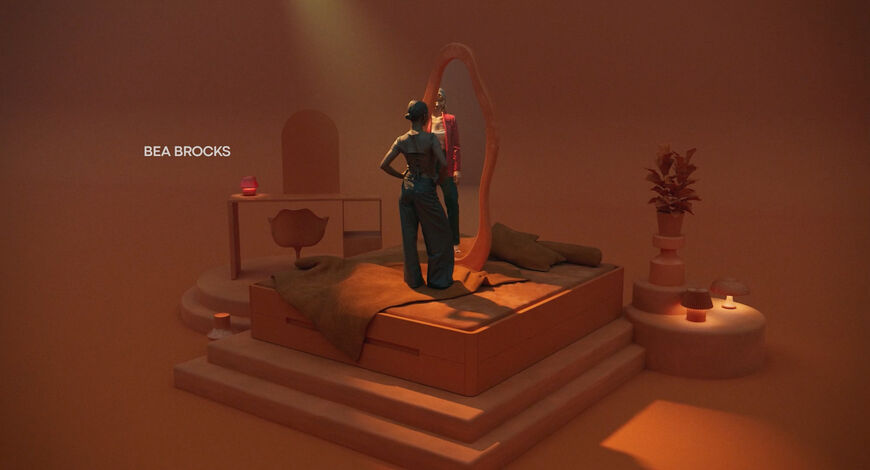
Luca (Maja Bons) looking in the mirror where the image of her mother (Bea Brocks) appears
ZN: But we tried to be cautious with judging… we didn't want the title sequence to have any judgement in it.
JB: We really tried to use the title sequence without spoilers. I mean, if you re-watch it afterwards, you will recognize a lot of settings and, like, the pool scene where the father is swimming with the laptops. But we didn't want to touch too much in it.
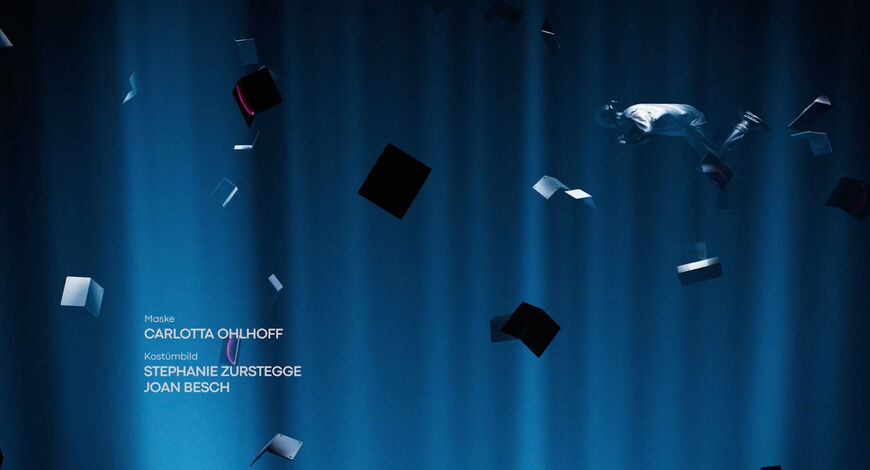
Chris (Liliom Lewald) swims in a pool as laptops float around him
JB: I also wanted to add that Zoi, she also did the whole UI stuff in our film. So like, all the Instagram and YouTube stuff, it's all from Zoi.
It seems rare that a title designer works on other parts of the film and gives it that sense of cohesion.
JB: It was so great because, yeah, it feels like all from one source. It all comes together very, very nicely.
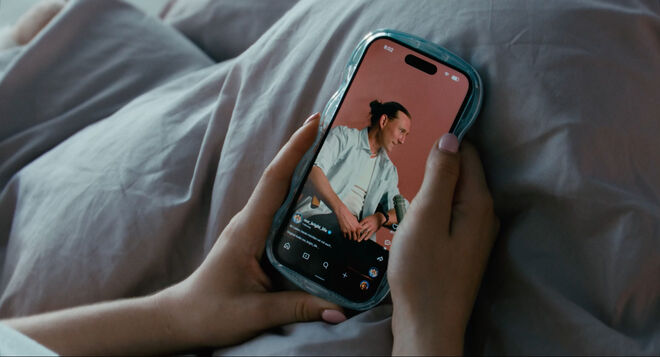
Luca (Maja Bons) watches her father (Liliom Lewald) on Instagram
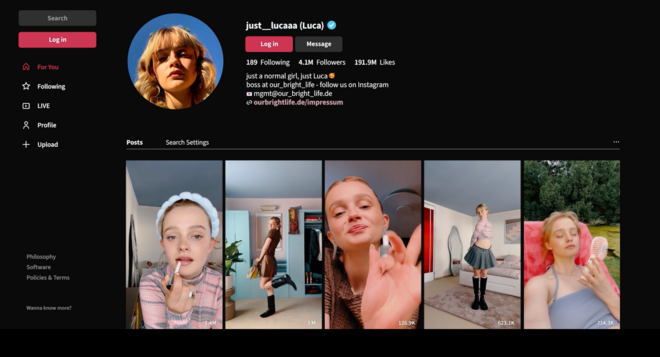
Still from Babystar showing Luca's Tiktok page
What were some of the inspirations for the title sequence?
JB: My first inspiration was Marco Mori. I don't know if you know him. I'm sure he's German. It’s a lot of 3D animation in stylized rooms. His humans don't look too human and are very funky in their habits, how their bodies move. So this was somehow the starting point. But of course, Severance was a big inspiration to us. I think Oliver Latta is truly masterful with the two Severance title sequences he did. So this was also inspiration, but maybe more when it comes to vibe.
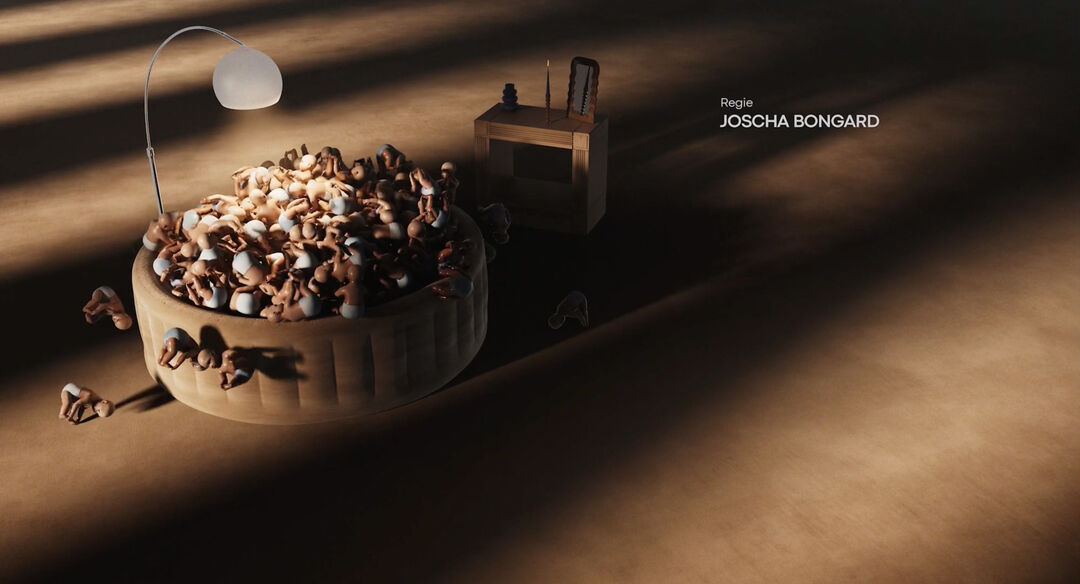
Still from the title sequence featuring a pile of babies overflowing in a birthing tub
ZN: When we started, Joscha came with these specific inspirations and we figured this out in combination with these contemporary art displays and just weird digital art. Making it weird but not too weird was a big part of the process. Like, the babies that duplicate themselves and stuff like that, it's all coming from that weirdness that doesn't judge.
Simulation test featuring Chris (Liliom Lewald) being covered in hearts
Simulation test featuring Stella (Bea Brocks) being covered in phones
Did you storyboard to figure out the path that the title sequence takes?
ZN: Yes, but not in a classical way. When I saw the first assembly of the movie, I sketched a lot of settings and scenes that stood out to me. We shuffled things around and tried to work out what could work. We tell all of these things in a very abstract way. Some things were a bit over the top. Some were so cryptic that you wouldn't understand anything. So it was just sketching out and trying to find different ways to tell the story.
JB: That was so lovely to see and I was so hyped from the very beginning. The first sketches were so great already, and then, like, also the first renderings. I was like, “Okay, what comes now? What comes next? How? How can this even improve?” It was a magical process for me.
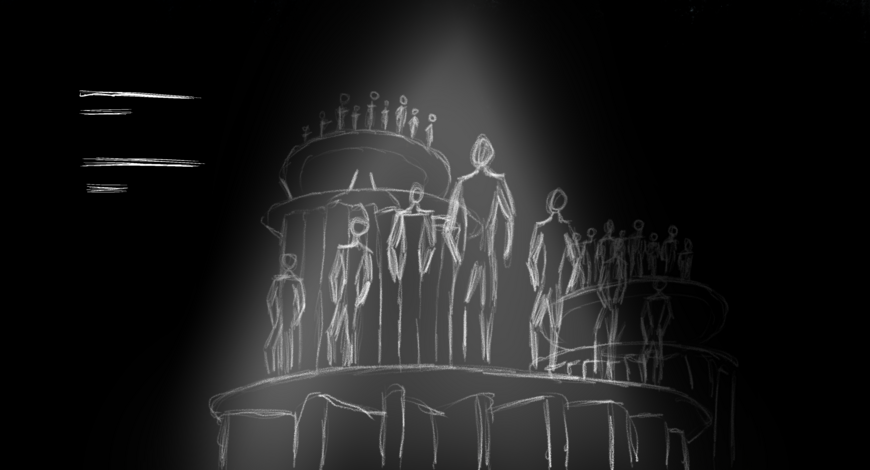
Sketches for the Babystar (2025) title sequence by Zoi Naum
Babystar title sequence early version 01
Babystar title sequence early version 02
Zoi, what was your workflow like? What tools and software did you use?
ZN: It was mainly done in Cinema 4D with Redshift, and in the end, some compositing and finishing up in After Effects. I would say 95% was just Cinema 4D and Redshift.
In this scene with the bathtub, what is overflowing in there?
ZN: It's actually chicken nuggets. We wanted to show this parallel between what they show to the world, which in Chris's case is this gym stuff, and on the other hand, we have them secretly eating junk food. So we had the tub overflowing with chicken nuggets and he dives in.
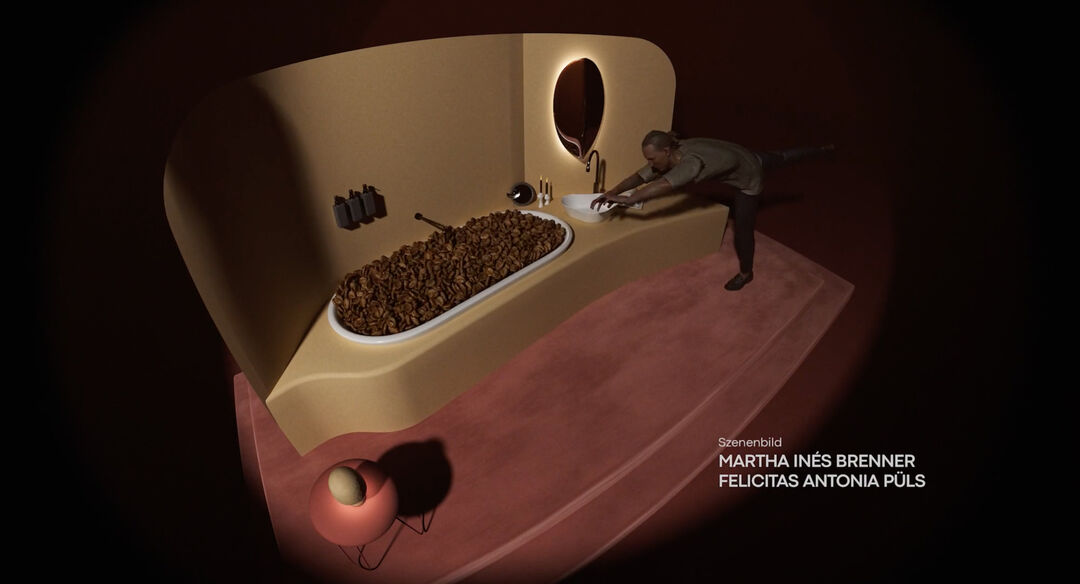
Chris (Liliom Lewald) dives into a bathtub full of chicken nuggets
How did you work with Lukas Löffler and Ole Bornitz, the 3D modeller and renderer that pitched in? Tell me a little bit about how that teamwork went.
ZN: The workflow was a bit different than what one would do normally. Normally you do styleframes and try to figure out the visual style before actually doing everything but because everything developed side-by-side with the edit, it was more of like a playing around. We started with the visual environments and how things move and how to get it to the right point of weird. How time behaves and how we use the camera angles. The actual style phase was very late, and that's when Lukas and Ole came on. Because of this very distinctive style of the props and the production design, we really wanted to incorporate that in a very accurate way. That production design did an amazing job with many objects that are so memorable.
Simulation test featuring multiples of Luca (Maja Bons) falling into a box
Simulation test featuring cans of iced tea
ZN: Like, the mirror in Luca’s room is so specific and nice. So Lukas basically came in and modeled everything that we needed from the movie for our little theater sets, and Ole did all the rendering. We had a lot of time to do fine tuning at the end without having to look into render times on my side, so we could tweak as long as possible and then outsource the rendering basically.
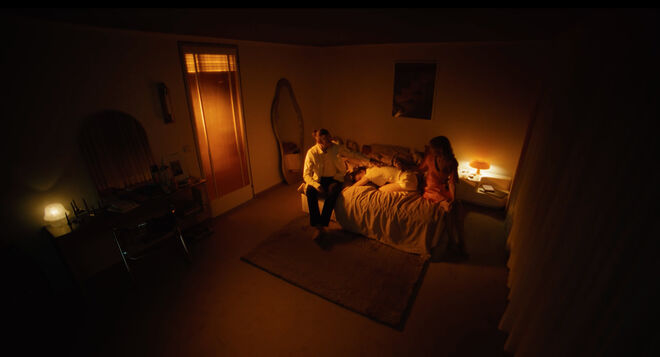
Chris (Liliom Lewald) and Stella (Bea Brocks) comfort Luca (Maja Bons) in her bedroom
I'm glad you mentioned the mirror because its shape stood out to me. Joscha, can you talk a little bit about that mirror?
JB: Oh, actually, I don't know where the form came from. It was all production design, Martha Inés Brenner and Felicitas Püls... [pauses] I mean, I think I get the reference that you're referring to. [laughs] When I think about it for the first time now, I mean, it's… [pauses] it's good, right? I mean, it somehow looks like… [pauses awkwardly]
A vulva.
JB: Yeah, looks like a vulva! [laughs] And connected to Luca… and giving birth, it somehow fits. I'm gonna ask the production designers!
Right, it’s all around the same notions. Luca and her mother, and what's between them. The idea of the baby and even your umbilical idea…
JB: No, you’re right, it was definitely on purpose. It was a great idea by the production designers. I love that you noticed it and I didn’t and now it is very obvious to me!
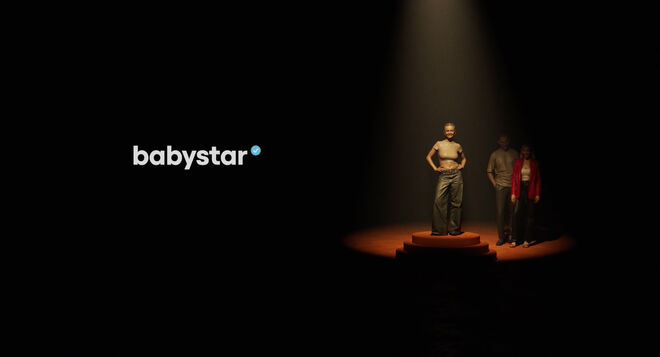
Babystar (2025) main title card

